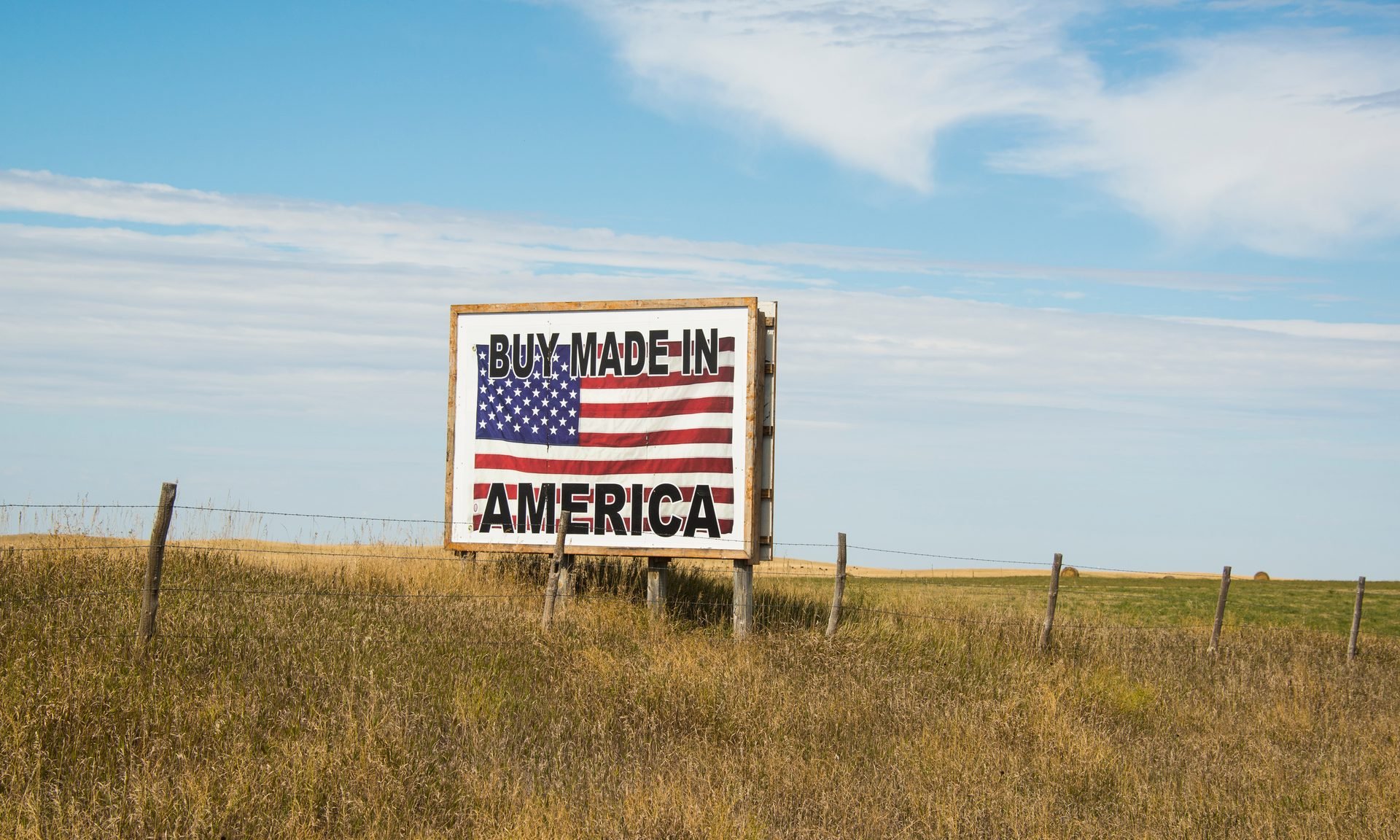Facing Tariffs, Should Shoppers Seek ‘Made in USA’ Goods?
American shoppers may be enthusiastic for U.S.-made products, but they may also have a tough time finding and affording them.

Many, or all, of the products featured on this page are from our advertising partners who compensate us when you take certain actions on our website or click to take an action on their website. However, this does not influence our evaluations. Our opinions are our own. Here is a list of our partners and here's how we make money.
Shoppers who are concerned about tariffs driving up the costs of their favorite products might think that “Made in USA” goods could offer financial relief. But finding domestically manufactured, budget-friendly items may take effort.
Americans like the idea of buying more American-made products. A November 2024 poll by Morning Consult, conducted for the Alliance for American Manufacturing, found that 60% of Americans said they made an effort to buy U.S.-made goods over the past year. And 82% said they’d buy more if retailers made those products easier to find.
‘Made in USA’ won’t always mean tariff-free
Buying American products doesn't mean avoiding tariffs or the global supply chain. Even the most well-known U.S. companies depend on imported components to make finished goods.
Meet MoneyNerd, your weekly news decoder
So much news. So little time. NerdWallet's new weekly newsletter makes sense of the headlines that affect your wallet.
Take Crayola, for example: It’s headquartered in Pennsylvania and has manufacturing facilities in the U.S., but it also produces some of its products in Mexico. Some other iconic American brands base at least some — if not all — of their manufacturing outside the U.S. where labor and other production costs are lower. That includes Levi’s jeans, L.L. Bean apparel, Converse’s Chuck Taylor All Star sneakers, Ray-Ban sunglasses, Major League baseballs, American Girl dolls, Fender guitars and essentially everything Nike.
Even distinctly American auto companies like Ford, General Motors and Stellantis assemble cars domestically but need to source parts from elsewhere. Some 30,000 parts go into assembling a car. In the process of sourcing, producing and shipping, many components will be subject to tariffs each time they cross borders.
In essence, any U.S.-made goods that require imports somewhere in the production process will face higher production costs while tariffs are in place. And when import prices go up, the final products made in the U.S. could become more pricey for consumers.
Something else to consider: Even if “Made in USA” products are 100% sourced and produced domestically, it doesn’t mean those goods will be cheaper than foreign or import-dependent, U.S. goods that come with tariffs. The cost of labor, materials and regulatory compliance can make U.S. manufacturing expensive. Shoppers need time to find and compare their options.
What happened when I went looking for a pan
Finding “Made in USA” products that are fully produced in America — as in, sourced and manufactured here — can be a needle-in-a-haystack pursuit. But it truly depends on what you’re looking for.
Recently, I went looking for a cast-iron pan. It’s the one kitchen item that I grew up with but don’t currently own. And because it somehow feels American in my mind, I went hunting for an American-made cast-iron pan. Turns out, in this case it wasn’t too hard! But costs varied pretty widely.
I started with a well-known U.S. brand: All-Clad, a cookware company that’s headquartered in western Pennsylvania and bases its manufacturing there, as well. Its boundless stainless steel cookware is made entirely in the U.S. But when I looked at the product specifications on its 12-inch enameled cast-iron skillet with a stainless steel lid, it says it is made in Vietnam. Not a deal breaker for me, personally, but for the purposes of this article it’s not a winner. For the record, the price tag was $109.99 — on sale from $189.99.
Another Pennsylvania-based cookware company, Lancaster Cast Iron produces every one of its products in-state, including its No. 10 skillet, a nearly 12-inch pan that runs for $225.
Then there was Field Company, a small cast-iron skillet company based in New York City. Its No. 10 pan — at almost 12 inches and advertised as a “smoother, lighter” cast-iron skillet — came in at $215, while the matching cast-iron lid was $140. A pan-and-lid set was $300. All of Field’s sourcing is done in the U.S., and its production is in Indiana, Illinois and Wisconsin.
Finally, I looked for a budget cast-iron-specific kitchenware company and found Lodge Cast Iron — a 129-year old company based in Tennessee. It prides itself on producing 80% of its products in the U.S.; some are produced overseas, like its enamel-coated cast-iron. But its classic seasoned 12-inch cast-iron skillet is made in the U.S. Last I checked, it was on sale for $24.90. A cast-iron lid cost around $30.
Given my limited kitchen prowess, I went with Lodge — the most affordable option.
What it takes to get the ‘Made in USA’ label
To promote products as “Made in USA,” the Federal Trade Commission (FTC) says the products must meet its standards. It’s been that way for decades, but it wasn’t until 1997 that the FTC provided specific guidance to companies on using the “Made in USA” label. In order to advertise that a product is “made,” “manufactured,” “built,” “produced,” “created,” or “crafted” in the U.S., the majority of that company’s products must actually be “all or virtually all” made in the U.S.
All-Clad and Lodge Cast Iron can broadly promote themselves as “Made in USA” because the overwhelming majority of their products are. But in advertising specific products, companies can’t claim the products are made in the U.S. when they’re not.
Ultimately, choosing to purchase American-made products is a matter of personal priorities. Whatever the reason — cost, quality, ethics or desire — shoppers will need to do some research. Depending on the product, cost-conscious consumers may have to make the decision between supporting domestic manufacturing and buying what’s affordable.
Are tariffs bringing manufacturing back to the U.S?
It’s unclear if President Donald Trump’s tariffs will bring more manufacturing to U.S. soil — as he says they will. Even with tariffs, some companies may still find it cheaper to manufacture goods in countries where costs of labor, sourcing and production are less expensive.
Still, domestic manufacturing is growing: The most recent data shows that in March 2025, spending on manufacturing construction was 3.7% higher than a year earlier. It’s part of a broader upward trend that began in 2011.
But bringing manufacturing back to the U.S. — also known as reshoring — won’t happen overnight. It takes time to build factories, fill positions and get production going. That means that even if investments are being made, there’s bound to be a lag before more “Made in USA” products become available.
Article sources
NerdWallet writers are subject matter authorities who use primary,
trustworthy sources to inform their work, including peer-reviewed
studies, government websites, academic research and interviews with
industry experts. All content is fact-checked for accuracy, timeliness
and relevance. You can learn more about NerdWallet's high
standards for journalism by reading our
editorial guidelines.
Related articles













